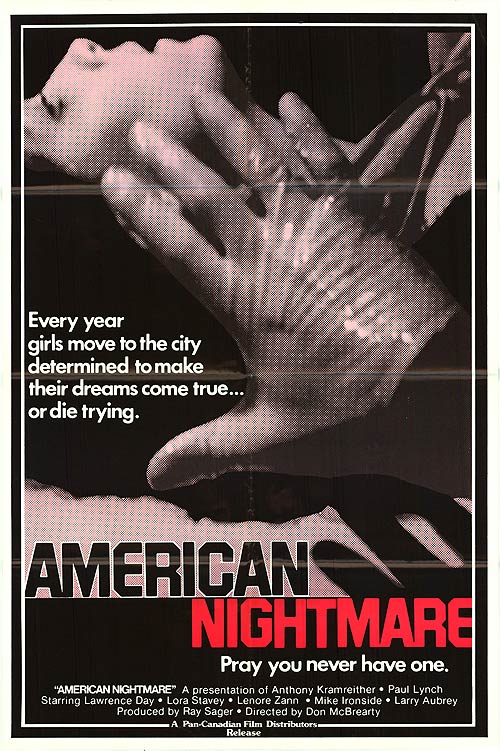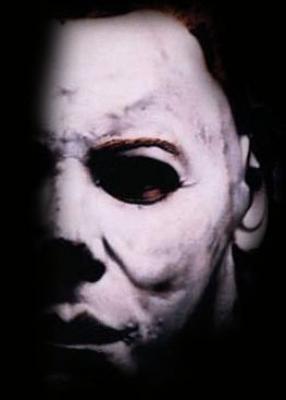 Written by David Boyle.
Written by David Boyle.
As a horror fan I’m grateful for the long line of films that have drawn me to the most unyielding sectors of reality— and my imagination. Every time I go to see a scary movie, I find myself reliving the exact moment when I first felt a cold surge of fear shoot up my spine. That sensation, which many easily shaken movie-goers deem uncomfortable and downright grotesque, has left me with a willingness to be pushed over the frightful edge again and again. An absurd notion, you think? Am I crazy? Yes… a little.
For me horror is a subject of endless intrigue. My fascination with bone-shuddering themes runs deeper than you can imagine, yet I consider myself a sane and optimistic individual. When I was just a little boy I knew very little about what would provoke my mind to wander into unpredictable places. As an adolescent I locked myself in my room and watched videos slathered with disturbing imagery. I absorbed their substance and survived unscathed, uncorrupted by the pretend violence and gruesomeness. Still, I had no idea what kind of person I would turn out to be, but I was cognizant of this: After being exposed to a wide range of cinema I would never be the same. I became a creature of a harmless addiction: slasher films.
I’d like to pay tribute to ten of these films. Each of them in its own way has had a profound effect on me as a fan—and as a writer. No matter how many movies I see, I will always reserve a special place on my video rack for these diamonds of the darkness. Here’s a list of slashers that have kept me awake at night staring at my own shadow.
#10—“When a Stranger Calls,” 1979, written by Fred Walton and Steve Feke, directed by Fred Walton:
I’ll never forget listening to the phone ring on the babysitter’s end table in her clients’ living room while the kids are asleep upstairs. As I sank deeper into my chair, the anxiety of what was to come ravaged my entire body, the hairs on the back of my neck stood on end. The relative silence on the other end of the line was creepy. The wispy breathing dragged me deeper into the babysitter’s quandary. What did the caller want? Why was he toying with her? Viewers could easily put themselves in that situation, in that exact house, at that precise hour. The first half of this film had me gnawing at my fingernails. Various camera angles were used to establish the layout of the house and draw attention to its dark corridors and foreboding staircases. These particular details weren’t frightening in and of themselves; it was the mere idea of what lurked beyond them that clawed at my mind. Each time the phone rang my heart leapt and I screamed at the screen: “Don’t answer that, are you crazy?” Deep down I had to understand that if actress Carol Kane neglected to answer the phone there wouldn’t be a movie now, would there? Eventually she picks up the phone and listens to the dreadful enunciation of five chilling words: “Have you checked the children?”
The suspense in this film will have you squirming in your seat. Though this picture has surpassed the three decade mark, the plot is still vital and often recycled today— the sign of a classic. This movie (as well as the next one on my list) made telephones a formidable horror foe. I have used phones liberally in my storytelling, but I could never hope to match or exceed the mastery of “Stranger.” On the other hand, I cannot deny its influence.
#9—“Black Christmas,” 1974, written by Roy Moore, directed by Bob Clark:
This film is similar to “When a Stranger Calls”: a deranged caller torments his victims—in this case, the girls of a sorority house on a snowy evening. The striking difference between this film and the former is that in “Christmas” the caller’s dialogue is exceedingly more obnoxious and obscene, almost demonic. Olivia Hussey, whose character is on the receiving end of the vile phone calls, gives an extraordinary performance; her fear of the voice over the phone, her expressive body language, helps anchor the plot. For many years the comparisons between this movie and “Stranger” have recurred. But make no mistake: this flick stands proudly on its own merit. I remember seeing it for the first time; I just couldn’t believe that fans weren’t talking about it, hyping it up like they do these days for inferior films. For some reason “Black Christmas” has been overlooked by genre pundits, but it delivers plenty of real-life scares. The writing here is taut, the direction on point. Few films of the like have been able to match “Black’s” intensity without over-the-top violence and bloodshed. Movies of this kind would inspire any writer or filmmaker—it did the trick for me.
#8—“Wrong Turn,” 2003, written by Alan B. McElroy, directed by Rob Schmidt:
In addition to Buffy the Vampire Slayer’s Eliza Dushku, this terrifying film featured credible acting from a cast of virtual unknowns whose characters are trying to survive being tracked in the woods and murdered by a group of deformed men. “Wrong Turn” is ridden with tense moments and first-rate makeup effects by monster creator extraordinaire Stan Winston. These are characters that viewers can relate to—and even like, something lacking in horror films of the last decade. I was also impressed by the director’s refusal to sprinkle the film with superfluous nudity, a temptation many directors succumb to when they have an attractive cast (in this case one of them a popular TV personality). Instead he kept his story gripping and methodically paced—a wise choice indeed. I applaud all the people behind the scenes who made this lurid tale one of my recent favorites.
#7—“The Stepfather,” 1987, written by Carolyn Lefcourt, Brian Garfield, and Donald E. Westlake, directed by Joseph Ruben:
One of Terry O’ Quinn’s finest performances. His character runs the gamut from being a loving family man to expressing sheer lunacy. In many scenes O’Quinn seamlessly changes character, and his transition from cheerful to nefarious is acting at its finest. “The Stepfather” manages to depict a typical suburban family living in a harmonious community and then cleverly injects an unthinkable element of dementia. Unfortunately, the impact this film has had on the genre is often dismissed by horror aficionados. I don’t understand why. Maybe it’s because the story isn’t set in the woods or the villain’s face isn’t obscured by a mask. Who knows why die-hards infrequently mention this film among the best of the crop. But if you stop and think about all the great psychos of our generation, I’m sure many of them have been modeled after Jerry Blake. This flick has it all: poignant story, wonderful setting, fine acting, and a level of mystery that may haunt the viewer for a lifetime.
#6—“Jeepers Creepers,” 2001, written and directed by Victor Salva:
Another example of horror excellence without gratuitous sex or an A-list cast. Once Darry (Justin Long) sees “the creeper” dumping a body into a tube “Jeepers” gets off to a hasty start, submerging the audience in the depths of the macabre. “Creepers” was well conceived and adeptly executed. Several aspects of the story functioned to the film’s benefit: the strange looking but lightning fast truck, the strong cast led by Justin Long and Gina Philips (who play siblings), and one of the most repugnant and agile monsters (Jonathan Breck is the man behind the costume) you will ever see on the big screen. The only element of the film that I didn’t care for was the creature having wings and being able to fly, a device that for me leans too close to the supernatural/fantasy realm. However, “Jeepers Creepers” is a sure-fire knockout laced with high tension, plentiful gore, and pulse-pounding action—a rollercoaster of terror not to be ignored.
#5—“High Tension,” 2003, written by Alexandre Aja and Gregory Lavasseur, directed by Alexandre Aja:
As a writer and long-time horror fan I can say that this journey into madness is bound to unnerve anyone. Prior to seeing this movie it had been quite a while since I’d been so rattled by a slasher film, one that had my heart thundering and palms sweating for ninety minutes straight. I remember seeing this in a theater. That night the auditorium was practically empty. What a loss for those who stayed home.
“High Tension” is skillfully paced, and I was immediately engrossed in the story. The killer practically announces his arrival by ringing the doorbell of a country home in the middle of the night just seconds before he embarks on a slaughterfest. Surprisingly the movie has minimal dialogue: the plot advances by sustaining a predominantly visual thread of unbridled dread. Fans who decide to check this one out better remember that Aja is not a director who’s reluctant to graphically expose the abominable. The tension throughout this film is merciless (I believe the title says it all). HT has widespread gore and intense stalking sequences, carefully developed scenes of cat and mouse between killer and heroine. Even though it was a theatrical underdog (limited release, lackluster reviews, no promotion, poor box office), I believe that “High Tension” revitalized the slasher domain and, over time, steadily earned the respect of fans, even horror’s most demanding viewers. “High Tension” placed Aja on the horror map and awarded him opportunities to write and direct other scary films, including a remake of Wes Craven’s “The Hills Have Eyes”—(Craven, after having seen Alex’s film, asked him to freshen up some of his catalogue.)
I’ve watched countless horror films over the last four decades, and I can say without a doubt that Alexandre Aja, should he continue his reign of grisliness on the silver screen, has the potential to become one of horror’s greatest storytellers. As a writer and fan I am enthusiastically cheering him on. I recall, verbatim, the words I said while leaving the theater after having seen “High Tension”: “Somebody finally understands real horror.”
#4—“Psycho,” 1960, written by Joseph Stefano, novel by Robert Bloch, directed by Alfred Hitchcock:
When it comes to discussing tales of shock and suspense, you can’t have a list without Alfred Hitchcock on it. Horror’s most pious fans consider “Psycho” to be the godfather of slashers. I consider it a cinematic masterpiece. It had everything a powerful movie should have: superb acting—strong leads and a convincing supporting cast; an eerie setting—Bates’ Motel; and an intricate plot: a man dressing up as a woman and pretending to be his own mother, embodying split personalities without complicating the story or clouding the film’s overall tone. Filmmakers today are still trying to achieve the camera angles Hitchcock used during shooting—Gus Van Sant, who remade this film back in 1998, mentioned his inability to ascertain those specific perspectives.
“Psycho” of course is renowned for the famous slaying of Janet Leigh in the shower, a surprise killing of a major star within the first thirty minutes of the film. This Hitchcock favorite still inspires filmmakers today, and Norman Bates has become an archetype for current genre madmen. When I think of “Psycho” I silently utter these words: “I only wish I could write something that dynamic.”
#3—“Texas Chainsaw Massacre,” 1974, written by Tobe Hooper and Kim Henkel, directed by Tobe Hooper:
Combine a mask wearing psychopath and a chainsaw and you get a smorgasbord of wicked carnage. This film is unique: it introduces the chainsaw to the slasher weaponry. The growling of the machine being started is enough to make anyone tremble. That power tool seems to evoke a universal psychosis, and when Hooper brainstormed the idea for this film, aside from using serial killer Ed Gein as a reference point, he must have known the best way to send us running for our lives. TCM is responsible for bringing the crazy backwoods family to the forefront and for arming many villains with outrageous weapons. It also helps to account for the populace’s fascination with serial killers. This movie gave me nightmares, more than I can count—or want to. Every time I hear the roar of a chainsaw in real life, I flashback to the end of the movie when Leatherface is chasing the heroine and swinging the saw in circles, dancing with it like a monster who clearly savors the ways in which he plans on maiming his target. “Texas Chainsaw Massacre” screams horror at its purest, its rawest, its most visceral. “Massacre’s” indelible mark on the genre will never be forgotten; it will continue to influence writers and filmmakers for years to come.
#2—“Friday the 13th,” written by Victor Miller, directed by Sean Cunningham:
Even though in the original film he only makes a brief flashback appearance at Camp Crystal Lake, Jason Voorhees is a horror icon, his story one of the most legendary campfire tales. Why is that, you ask? Because isolating a bunch of kids in a cabin in the woods amongst the unknown is a reliable premise for the ideal spooky story. The killing in “The 13th” has been left in the hands of Jason’s mother, a woman who seeks revenge against the camp counselors for letting her son drown—or did he? “Friday” is one of those films that has gone through many changes, most notably the mask. One of our favorite on screen maniacs has chosen different looks to conceal his hideousness, among them the potato sack and the infamous hockey mask. Jason’s hockey mask has become the international symbol of horror, the beckoning peak at the top of the slasher-film mountain. When you’ve reached the apex and have experienced its aura firsthand you are part of a unique family.
When the original “Friday” hit the big screen in 1980, I remember writhing in my seat to that familiar soundtrack, ch-ch-ch-ch-ch—translation: Kill-kill-kill-ma-ma-me. If you made that noise at a party or anywhere else, it was instantly identified. Composer Harry Manfredini’s spine-tingling score has left a stamp on one of horror’s crowning achievements.
The acting in this film complements the story, especially the work of screen veteran Betsy Palmer. Fans had realistic characters to invest their fears in and plenty of suspense to test their bladder control. Thanks to “Friday” the world also got to meet one of America’s beloved actors, the esteemed Kevin Bacon. Unlike many thespians that look back forlornly on getting a big break in horror, Mr. Bacon has always spoken highly about his roots and is proud of his contribution to a film we hold close to our hearts—and I too share a pride in “Friday the 13th.”
#1—“Halloween,” 1978, written by John Carpenter and Debra Hill, directed by John Carpenter:
To me this picture is horror’s greatest triumph. It has occupied a special place in my heart ever since it left me breathless as a young boy. I recall watching this twisted jewel with a bunch of friends at my parents’ house. When the movie was over nobody had the guts to walk home alone. Around every dark corner and behind every large caliper tree we suspected “the shape” to emerge with a razor-sharp machete.
“Halloween” is the prototype of the slasher film. Michael Myers’s influence has spawned more copycats than a trendy boy band. No one has ever topped this film (sorry Rob Zombie). I’d like to clear something up before horror zealots become enraged. I did enjoy Zombie’s version of the classic but I’d like to draw a contrast to a specific aspect that no one has touched on hitherto. When I left the theater after seeing Rob’s movie, I recall thinking this: His Michael Myers, portrayed by Tyler Mane, although much taller and more muscular than the original played by Nick Castle, is not nearly as intimidating as the shape in Carpenter’s story. The first film didn’t rely on excess brutality or blood-spilling to demonstrate the protagonist’s virility and malevolence. The story itself, in conjunction with a virtuoso performance by Donald Pleasence, punctuates the sinister undertones of the plot. “Halloween” is not a tale revered for its gore and extreme violence; rather, it is recognized and marveled at for its consistent tension, a robotic-moving evil presence, and a simple yet ominous musical score. For over thirty years, viewers have trembled at Myers’s heavy breathing, his white mask, and his utter lack of motive. Every move Michael makes is cunningly executed, his attacks are calculated and impossible to evade— although Laurie Strode (Jamie Lee Curtis) does a commendable job of grappling with her nemesis until help arrives.
For me October 31st will never be the same without hearing those keyboard notes, the tones that comprise the catchy background music. This film is the reason why I became a horror fan, and it’s wholly responsible for my embarking on a writing career and starting in the horror field. I’m repeatedly waving the “Halloween” flag at every opportunity. I wish I could meet Carpenter one day and shake his hand and thank him for giving me a lifetime of sweetly dangerous memories. If you claim to be a horror fan and haven’t seen “Halloween” perhaps the wrong wires in your brain have crossed and you will need to get your priorities in order. Just kidding. Still, you should get moving and head over to your local video store and snatch this one up.
The entire horror community owes John Carpenter a monstrous round of applause. His work makes me proud to be a fan of our beloved genre. And when squeamish audiences condescend to slasher films, as is often the case, this film usually backs them into a corner and demands apologies. The horror in “Halloween” is real. It is tangible. It preys upon everything that makes us cringe as humans. Some part of Michael Myers, regardless of how miniscule or elusive, lives inside us all. Most of us look in the mirror and ponder, however briefly, what we see. Myers put on a mask and carried out his own orders, followed his own impulses. And don’t forget one thing: The shape is returning to Haddonfield soon, and his knife is sharper than ever.
Well, there you have it— a list of the horror flicks that started it all for me. I’ve given some thought as to why I’m so hooked on this kind of horror in particular. You see, unlike supernaturally driven stories, slasher themes require the characters to face the bad guy in the flesh; to stand their ground or be harmed… or killed. And if they’re going to survive the horrendous situations before them they must act resourcefully and exercise intelligence, without spells or tonics or special powers or voodoo or anything else synonymous with the fantastic. Confrontations in slasher films are won or lost by physical strength, courage, and prowess. We are all afraid of the boogeyman, of strangers, of Internet prowlers, of people who seem too nice or too good to be true— anybody with stalker potential. Slasher films show us what happens when our thoughts and judgments mislead us, what the consequences are when we’re not paying attention to life’s eeriest nuances. Despite being belittled by mainstream audiences, slasher films often present us with virtuous characters overcoming the odds under tremendous pressure, victorious in the face of danger. And it’s something that horror devotees, myself included, have fun watching.
Thanks for listening to my points of view. As I’ve said before, this is a list of films that have influenced me most. Without extensive research I could provide you with hundreds more that have scared me senseless, but my purpose here was to narrow down the roster. I hope you’ve enjoyed our journey through some of horror’s finest creations. All you have to do now is run to the video store, grab some copies off the shelf, and get your popcorn. And make sure that when you shriek the neighbors can hear you! Sweet dreams.
David Boyle can be found at www.myspace.com/davidbfear

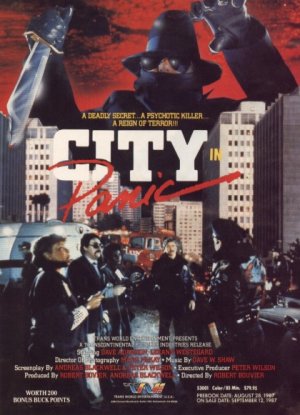


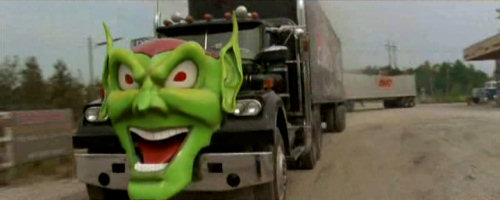
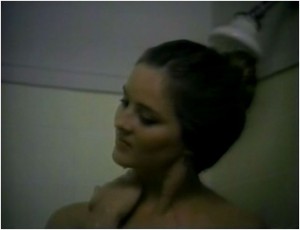
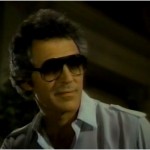
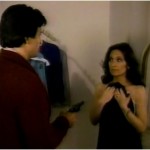
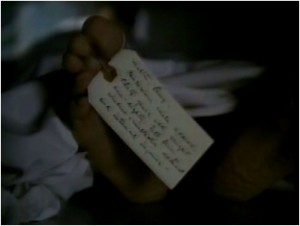
 Written by David Boyle.
Written by David Boyle. 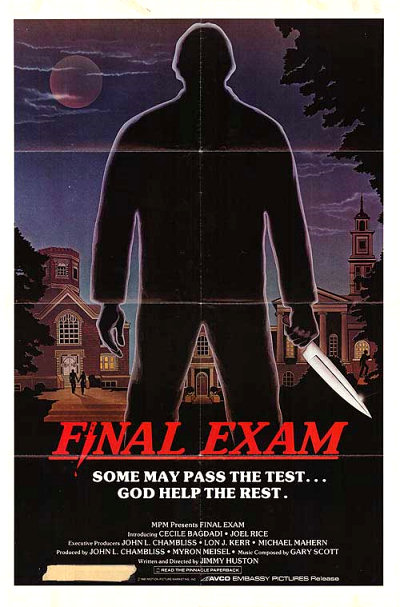
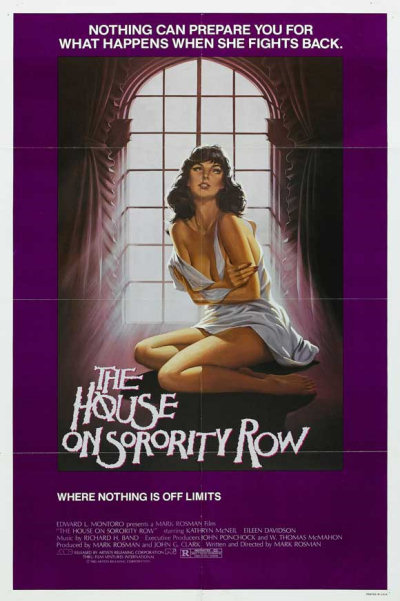
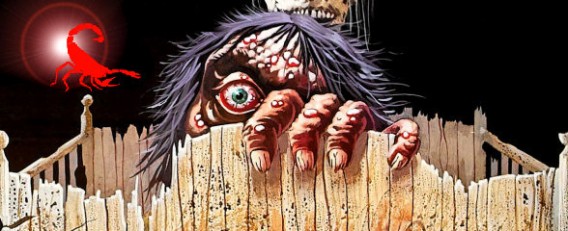
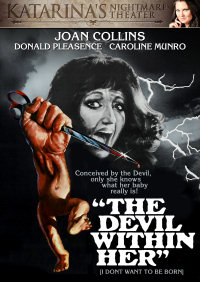 Scorpion:
Scorpion: 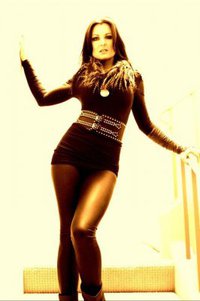
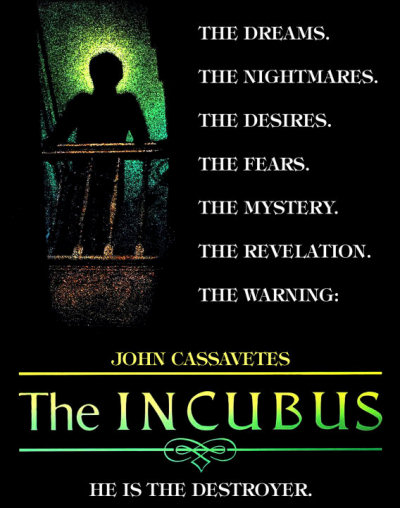 A rapist is stalking the quiet streets of Galen. The town doctor (John Cassavetes) and sheriff (John Ireland) are horrified by the vicious crimes and perplexed by the strange evidence left at the crime scenes. The doctor discovers the attacks only occur when Tim, his daughter’s boyfriend, has nightmares. Is Tim responsible, or is there a more sinister force at work?
A rapist is stalking the quiet streets of Galen. The town doctor (John Cassavetes) and sheriff (John Ireland) are horrified by the vicious crimes and perplexed by the strange evidence left at the crime scenes. The doctor discovers the attacks only occur when Tim, his daughter’s boyfriend, has nightmares. Is Tim responsible, or is there a more sinister force at work?